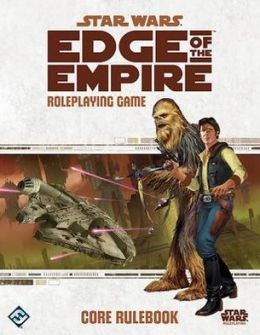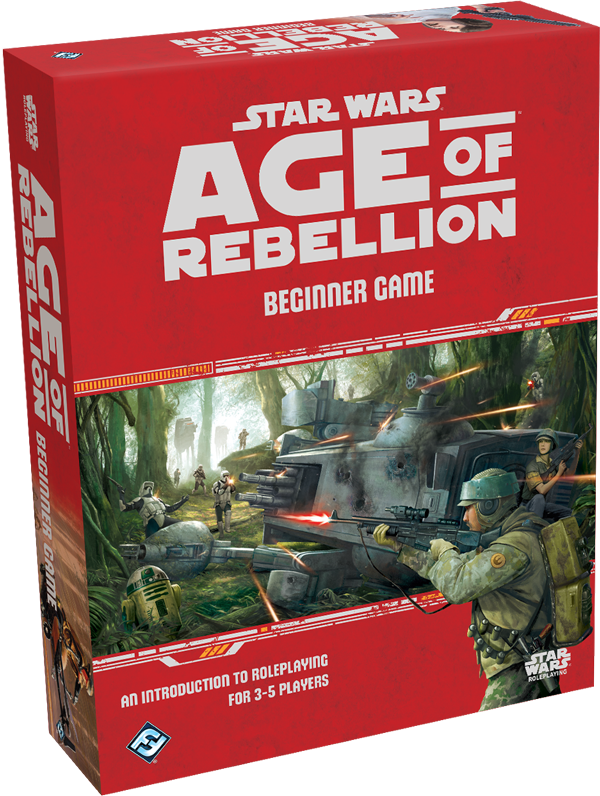A Long Time Ago in a Galaxy Far, Far Away …
I may be a humble teacher, dungeonmaster, blog-author, sword sorcerer but sometimes I feel like I have a strong understanding of how people think. When I was young one trilogy of movies forever changed the way I looked at the world, stories, conflict, and the spiritual questions that plague mankind. I’m not talking about Indiana Jones but you were close. Lord of the Rings wouldn’t change me profoundly until I was a teenager. I’m of course talking about Star Wars.
From my style of writing, sense of humor, and general sense of self-importance you can potentially see the lasting influence Han Solo has had on my psyche. I can’t be alone, though. Who never wanted to strap a blaster on their hip and fly a starship from port to port, smuggling goods for the next big score and understanding an incomprehensible walking carpet? Also Luke was there, I guess. And Leia was really badass too …
I’m getting off topic. There are cool Star Wars RPGs. Check em out!


Star Wars Edge of the Empire and Star Wars Age of Rebellion utilize identical systems of character creation and dice use but have entirely different themes and tones. I recently purchased the Age of Rebellion Beginner Box pictured less than an inch above these words. I’ve been flipping through the Edge of Empire rulebook for the past few weeks. Here are my thoughts:
Age of Rebellion is for those persons who want to fight against the Empire. You want to be a rebellion commando or pilot or infiltrator who locates Imperial strongholds and blows them up in the name of galactic freedom. Admirable goals, in my opinion.
Edge of the Empire is all about being a scoundrel. The party is supposed to be a fringe criminal element operating on the outer rim, dodging bounty hunters, blackmail, Imperial patrols, and dwindling supplies to try and catch a break. It’s Firefly in the Star Wars Universe. I drooled a little as I typed that sentence.
The dice pool requires purchasing their unique dice or by utilizing a very complex chart to convert D6s, D8s, and D12s into the necessary symbols. I’m going to give you the short, short version of how these dice work:
- There are Good dice and Bad dice
- If you are good at things you get more Good dice
- If you are trying to accomplish something hard or there’s a time limit you have to roll more Bad dice
- You have to have more Successes show up on all the dice rolled than Failures
- Even if you Succeed you may do it in a bad way thanks to secondary symbols and vice versa. You can Fail in a spectacular way.
- There are also Criticals and Anti-Criticals
I just saved you about 45 minutes of deciphering. You’re welcome.
Both games have classes, sub-classes, and races like any good Tabletop Roleplaying Game. There are equipment charts all over these books, statistics blocks for starships, ideas for what sort of debts your scoundrels might need to pay off eventually, etc.
Here’s what separates Star Wars from your average Tabletop experience. It’s bursting with cool droids (playable), intense ship battles (think asteroid field dogfights, escape runs while trying to get the Hyperdrive to work, intense jaunts through narrow canyons while turbolasers blow dust and sand up onto the sensors), and more planets than you can swing a wookiee at (author’s note: wookiees are more likely to swing you). We’re not talking just Tatooine and Coruscant like you’re sick of. You want to go to Corellia, birthplace of the one and only Han Solo? Read up about it and make it happen. You want to go to Klak’dor VII, home planet of the buttheaded cantina band? I won’t judge. Hoth? Cool place. Cloud City? It’s a cut above the rest. I could sit here and make Star Wars planet puns for a long time and my editor would kill me if I did that.
There are some interesting rules for being a Force Sensitive Exile, as well, but I have to admit I’m not 100% on them. But how could you not want to be something called a Force Sensitive Exile while you’re bouncing from starbase to starbase on your rickety ship and exchanging blaster fire with mercenary lizard people?! Seriously?! WHO DOESN’T WANT THAT?!!!
I want to leave you with one final thought about how incredible I find this Star Wars RPG. Its design accomplishes one of my new favorite things about the Tabletop experience: freedom. You can run a narrow and rigid campaign that forces your players to hunt down a renegade smuggler who stole your previous ship and all the sweet spice you had on it. Or you can bounce from planet to planet, hoping for work and barely scraping by as you outrun the hired guns of a Hutt you crossed three planets ago while you were freeing a Twi’lek Dancer from his prison because she knew the access codes for a shipping crate packed with Corusca Gems. I literally came up with that as I was writing it because STAR WARS.
